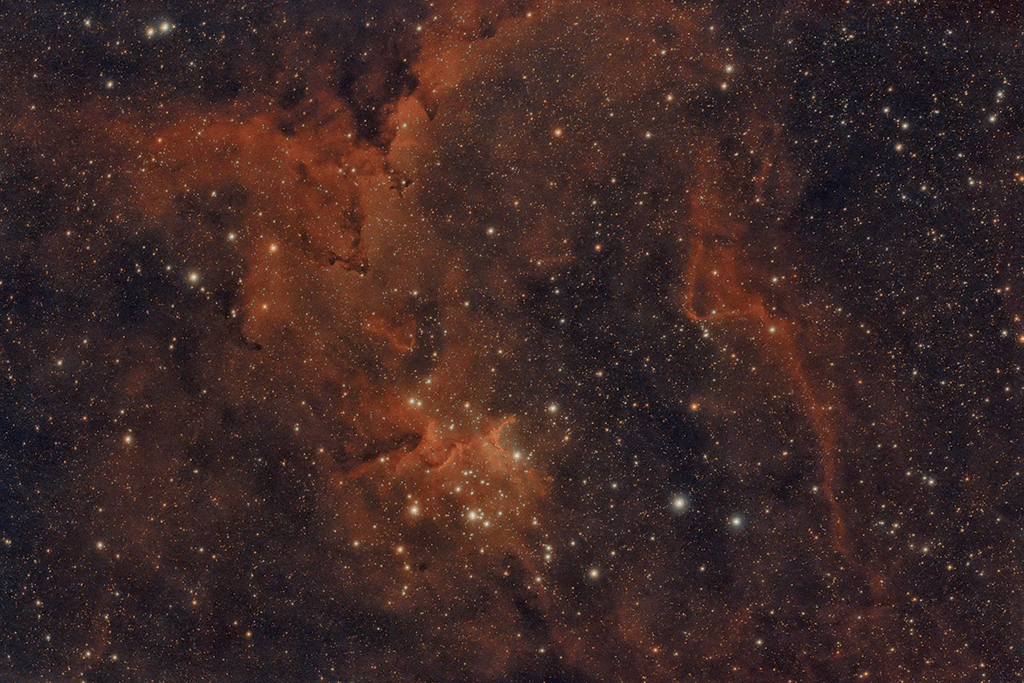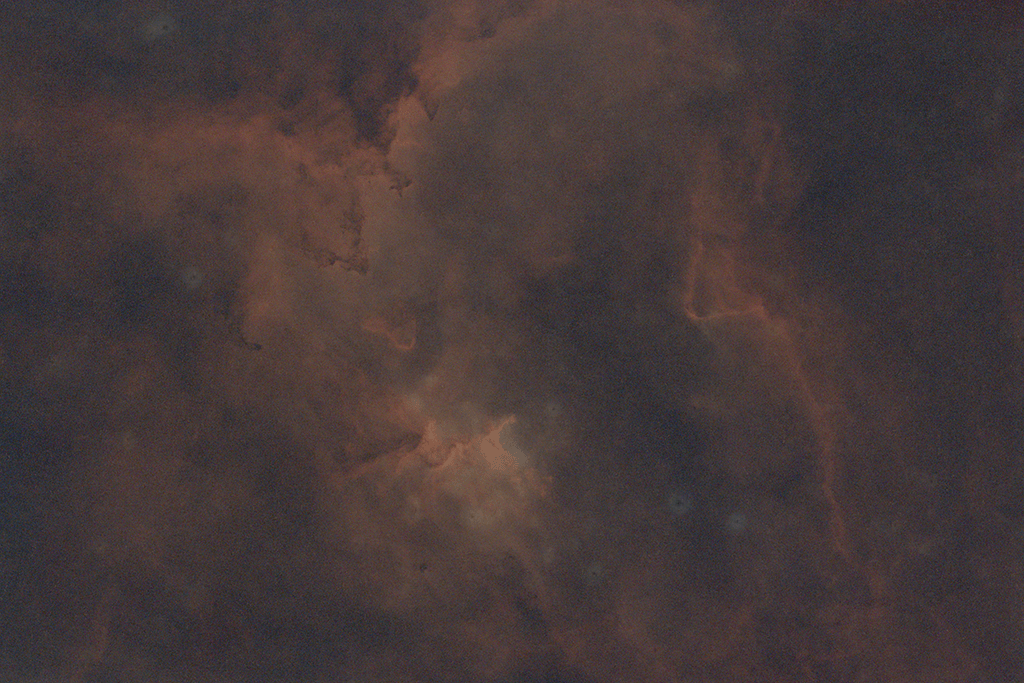
The Heart Nebula is an emission nebula in the constellation of Cassiopeia. Red ionized hydrogen glows alongside dark dust lanes. This view focuses on an open cluster of young stars at the heart of the Heart Nebula (called Melotte 15). These huge bright stars are responsible for carving away the various dust pillars.
This popular target never goes smoothly for me. This image merges two nights of data, three months apart. On the first night in May 2023, it unexpectedly clouded over after just two hours. On the second night in August 2023, the grub screw that grips the autofocuser to the focuser axle slipped just after I decided to leave it running and go to bed. I lost several hours of data. The seeing was also pretty poor on both occasions. I used every frame I can get away with in this image—even ones I might have preferred to reject.
At some time during the intervening period between May and August, I cleaned a couple of nasty-looking spots off the objective lens, which had developed over the winter (the first lens clean since I bought it four years ago). I also then removed the camera, and exposed the telescope lens to sunlight for an hour to kill the organism. Unfortunately, I didn’t quite get the camera aligned in the exact same position again afterwards, and ended up cropping the stacked image more than I wanted to hide the edge artefacts.
I processed this capture almost exclusively in my astrophotography processing software, Hera 0.4, with the only third-party software used being Topaz DeNoise AI for effective noise reduction. Hera 0.4 has several new features added since Version 0.3, including:
- Color and grayscale nox star removal with deep learning and convolutional neural networks (see here and here)
- REDNet10 noise reduction with deep learning and convolutional neural networks
- Photoshop-style layers, blending and masking.
In this image, I used my AI-driven nox star removal tool to create star masks. This allowed me to selectively enhance the very faint nebula without boosting the stars. (Stars are often a distraction in astrophotographs, and it’s usually nicer to emphasise the nebulosity and not the stars.) The image below shows an early stage of processing, just after removing the stars. In the next step, I subtracted it from the previous step to isolate just the stars—the basis of the star mask.

Image details
Frames
- 87× 150-s light frames (Gain 900)
- 3 h 37 min total integrated exposure time
- 50 frames on 21 May 2023
- 37 frames on 20 August 2023
- Full use of calibration frames (darks, flats, dark flats)
Equipment
- Explore Scientific ED 102 mm Apo f/7 refractor
- Revelation Adjustable Field Flattener
- Sky-Watcher EQ6-R PRO SynScan GOTO equatorial mount
- Altair Hypercam 294C PRO colour fan-cooled camera
- Altair quad-band one-shot colour (OSC) 2″ filter
- Pegasus FocusCube v2
- Altair 60mm guide scope
- Altair GPCAM2 AR0130 mono guide camera
- Hystou Rugged Fanless Mini PC i5 7260U
Software
- SharpCap 4.0
- PHD2
- DeepSkyStacker
- Hera 0.4
- Topaz DeNoise AI Clear for sharpening

